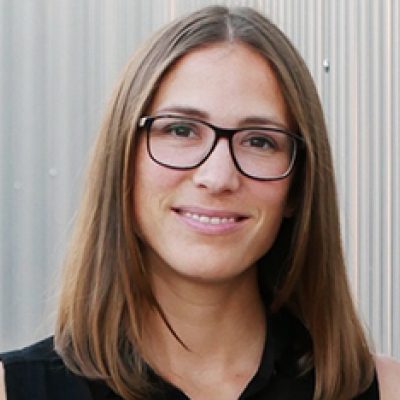Kimberly Watts

Associate Architect, Gehry Partners, LLP, Los Angeles
Education
Master of Architecture, University of California, Los Angeles (2006)
Bachelor of Arts in Architecture, UNC Charlotte (2004)
Previous Employers
Greg Lynn Form (Los Angeles)
servo los angeles
Hometown: Huntsville, Alabama
Kimberly Watts is an associate architect practicing with Gehry Partners, LLP in Los Angeles. Since joining the office in 2007, Watts has contributed to the design and construction of several cultural and residential projects both domestically and internationally, including the Weisman Art Museum Expansion in Minneapolis and 8 Spruce Street in New York.
“As an architect at Gehry Partners, I collaborate with my design team and with consultants to find the best resolution between technical constraints and the architectural expression of a project. Our office often works at the edges of building technology and form, where we encounter opportunities for innovation and experimentation throughout the advancement of each design.”
Two current projects: Under construction, LUMA/Parc des Ateliers is an arts and culture campus within a former train yard in Arles, France. Gehry Partners is overseeing the master plan as well as the design of the project’s landmark building, a 10-story tower clad in tiered and shifting panels that evoke the jagged limestone formations of the nearby Alpilles mountain range. Once completed, the building will house exhibition spaces, seminar rooms, communal spaces, artist studios, a library, café, and the LUMA Foundation offices. In the design phase, King Street West in Toronto will introduce a mixed-use complex comprised of existing historic buildings and two new residential towers within downtown Toronto’s arts and entertainment district. The towers will reach 81 and 91 stories to provide a significant contribution to the Toronto skyline. Glass enclosed podiums form the base of each tower and will contain retail and commercial space, residential amenities, and a facility for Ontario College of Art and Design.
“I was initially drawn to study architecture because I saw it as a way to explore an interest in design, focus an impulse to create, and direct those passions toward a practical endeavor. The very first studios and seminars showed me that more was possible within the field than I realized. The study of architecture was more than an opportunity to learn about buildings; it was the study of history, cities, culture, technology, the study of all that architecture embodies. UNC Charlotte provided that first glimpse into the layers and interconnections within the built environment that continue to preoccupy and fascinate me today.
“Architecture school taught me how to merge creative thinking and critical thinking to develop meaningful proposals. Some of my earliest struggles in studio involved learning how to identify and explain the ‘why’ behind creative action – how to remain conscious that each design move conveys intent and carries meaning. Professors presented us with a landscape of ideas and perspectives, encouraging us to claim ground and take a position. By learning about other architectural works and the people, cities, and times that inspired them, I was able relate my ideas to a larger discourse and define a framework from which to move forward.
“At UNC Charlotte, I also expanded my ability to communicate and present ideas to others. Professors introduced us to a variety of media and techniques from drawing and photography to digital fabrication and 3D models. Each offered a new way of thinking and communicating about architecture. We became practiced at sketching so we could quickly try out ideas and share them for feedback. Critical writing seminars and group discussions helped me better understand the work of other architects and in turn position my own work. Each design presentation and collaborative project improved my ability to translate the ideas in my head visually as well as verbally. Design reviews taught me how to listen to criticism, revisit my assumptions, and ultimately strengthened my understanding of each project.
“At the core of the program, the faculty bring a diverse range of viewpoints and approaches, inspiring a dynamic exchange of ideas. In studio, the lively sharing of ideas fed everyone’s drive and kept energy high through the late night efforts before design reviews. I remember pranks, delirious laughter, and intense work.”